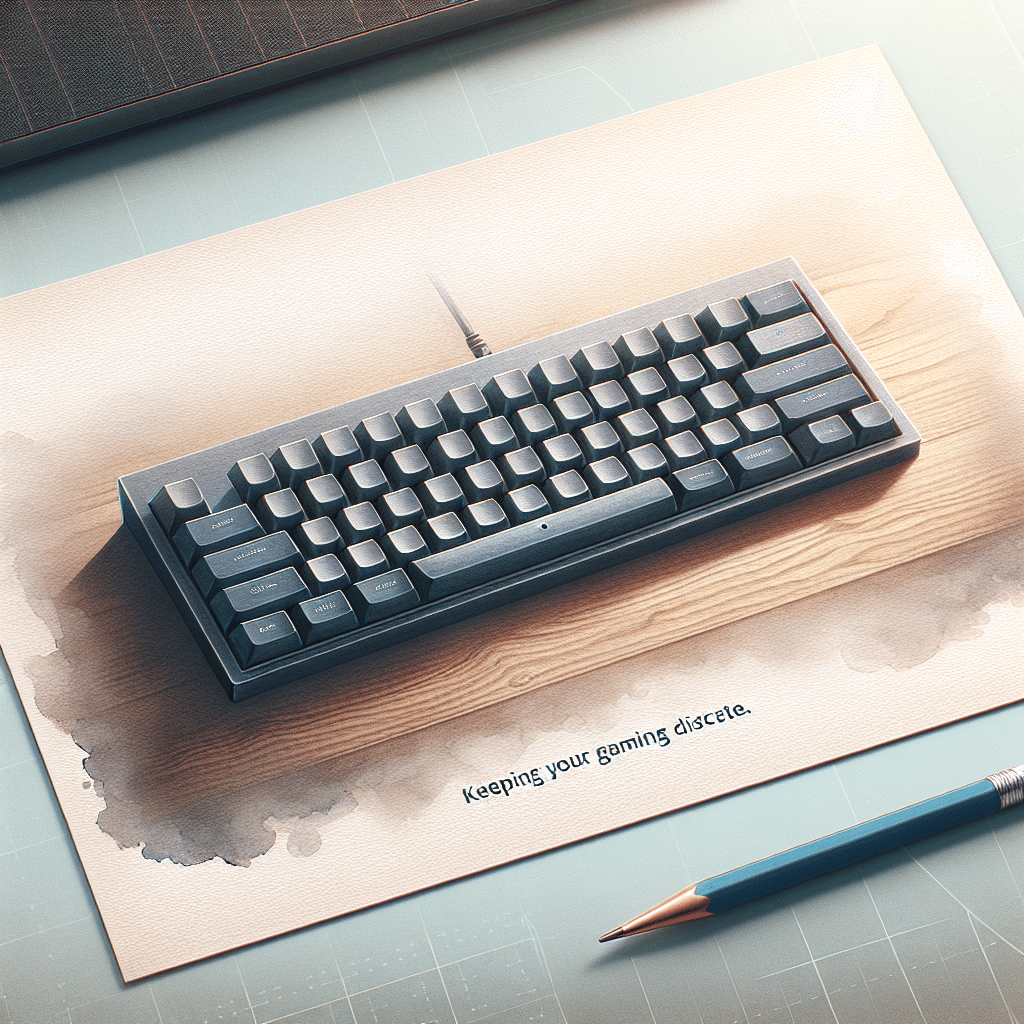Quiet Mechanical Keyboards: Keeping Your Gaming Discreet
Understanding Mechanical Keyboards
Mechanical keyboards utilize individual mechanical switches for each key, delivering tactile feedback, durability, and customization options. Unlike standard membrane keyboards, mechanical keyboards provide a more responsive experience that is favored by gamers and typists alike. However, the characteristic noise of traditional mechanical switches can become a disadvantage, especially in shared spaces.
The Need for Quietness in Gaming
While the clicky sound of traditional mechanical keyboards is satisfying for some, it can be disruptive in quiet environments, such as offices, libraries, or in shared living spaces. As gaming has diversified, more players seek a balance between performance and discretion. Quiet mechanical keyboards cater to this need by minimizing sound without sacrificing the typing experience.
Features of Quiet Mechanical Keyboards
-
Switch Types
- Linear Switches: These switches, such as Cherry MX Red or Black, provide a smooth keystroke from top to bottom, with minimal acoustic feedback. This makes them ideal for gamers who want a silent experience.
- Silent Switches: Brands like Cherry and Gateron offer silent versions of their popular switches (e.g., Cherry MX Silent Red or Gateron Silent Brown). These switches use dampening features to reduce sound without compromising performance.
-
Keycap Material
- The material of keycaps influences the sound produced during typing. High-quality PBT keycaps are denser and less prone to vibrations than ABS keycaps, resulting in a more muted sound profile. Opting for thicker keycaps can contribute to a quieter typing experience.
-
Keyboard Build
- The construction material of the keyboard chassis affects sound. Keyboards with a heavy metal or high-density plastic casing tend to absorb sound better than lightweight models. Additionally, some mechanical keyboards feature rubber or silicone dampeners, which inhibit vibrations and further decrease noise.
-
O-Ring Modifications
- Many users enhance their keyboards’ acoustics by adding O-rings, which are small rubber rings placed on the keycap stems. These rings cushion the impact when a key is pressed and when it bottoms out, effectively dampening sound.
Popular Quiet Mechanical Keyboards
-
Corsair K70 RGB MK.2 Low Profile
- Featuring Cherry MX Low Profile Speed switches, this keyboard combines a slim design with quiet operation. It’s equipped with customizable RGB lighting, making it an excellent choice for gamers who appreciate aesthetics alongside functionality.
-
Logitech G Pro X
- This keyboard allows for hot-swappable switches, letting users easily swap out for quieter options like GX Brown or GX Red switches. Its compact design ensures portability while maintaining a discreet typing experience.
-
Razer BlackWidow Lite
- This keyboard is designed with Razer’s Orange switches that provide tactile feedback while minimizing noise. It’s perfect for both gaming and professional settings, offering customizable backlighting for added flair.
-
Das Keyboard Model S Professional
- Known for its durability and satisfaction among professional typists, this keyboard features Cherry MX Brown switches, which offer a balance of tactile response and quieter operation.
Benefits of Using Quiet Mechanical Keyboards
- Reduced Noise Pollution: If you’re gaming late at night or working in a shared space, a quiet keyboard allows you to focus without disturbing others.
- Enhanced Focus and Concentration: A quieter environment can enhance your ability to concentrate on tasks, leading to improved performance in both gaming and professional settings.
- Comfort and Ergonomics: Many quiet mechanical keyboards are designed with ergonomic features, reducing strain on your hands during extended use. A well-designed mechanical keyboard can alleviate discomfort typically associated with prolonged typing or gaming.
Choosing the Right Keyboard for You
-
Assess Your Needs: Determine how much typing or gaming you’ll be doing. If you primarily use the keyboard for gaming, look for a model that highlights responsiveness and customized macros.
-
Test Different Switches: If possible, try different switch types to determine which one feels best for your typing style. This hands-on experience can significantly influence your decision.
-
Consider Size and Layout: Mechanical keyboards come in various sizes, from full-size to tenkeyless (TKL) or compact. Your workspace and preferences should guide your choice.
-
Evaluate Aesthetic Preferences: While functionality is critical, aesthetic appeal can also impact your experience. Look for models that offer customizable RGB lighting or different finishes that suit your gaming setup.
Maintaining Your Silent Mechanical Keyboard
Regular maintenance extends the life of your keyboard and preserves its quiet features. Here are some tips:
- Cleaning: Periodically remove keycaps and clean the keyboard to prevent dust buildup, which can lead to a less responsive feel over time.
- Lubrication: For those comfortable with keyboard maintenance, applying lubricant to the switches can enhance smoothness and reduce noise. Always use lubricants specifically designed for mechanical switches.
- Storage: When not in use, ensure your keyboard is stored in a dust-free environment. Using a keyboard cover can help protect it from dust and moisture.
Conclusion of Key Considerations
Quiet mechanical keyboards bridge the gap between performance and discretion, allowing gamers and typists to enjoy the tactile feedback of mechanical switches without the accompanying noise. Understanding the features and benefits of a quiet mechanical keyboard is essential in making an informed decision tailored to both your gaming needs and environmental considerations. As the demand for quieter tools increases, more innovations in mechanical keyboard design continue to emerge, making it easier than ever to find the perfect balance of functionality and discretion.
